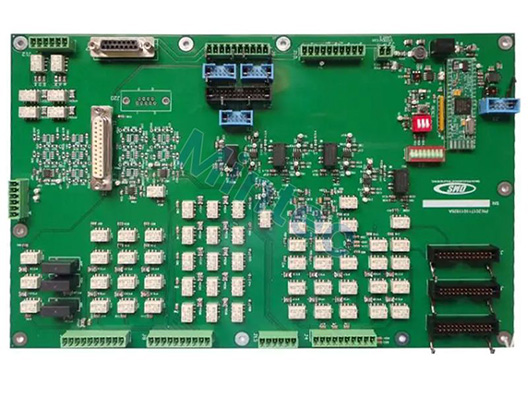Mar. 27, 2023
Electronic Components & Supplies
Printed circuit board assembly (PCBA) is the process of mounting and soldering electronic components onto a printed circuit board (PCB). There are several techniques used for PCBA assembly, each with its unique benefits and drawbacks. This article explores some of the most commonly used PCBA assembly techniques.

SMT is a widely used PCBA assembly technique that involves attaching electronic components to the surface of a PCB. The components are placed on pads that are pre-coated with a layer of solder paste. The PCB is then heated to melt the solder paste, which fuses the components to the board.
SMT is a popular PCBA assembly technique because it allows for smaller and more compact designs, higher component density, and faster production times. SMT is also more cost-effective than other PCBA assembly techniques, as it eliminates the need for drilling holes in the PCB and allows for more efficient use of PCB space.
However, SMT does have some drawbacks. It requires precise placement of components, which can be difficult for small or delicate parts. Additionally, the heat used in the SMT process can damage sensitive components, and the quality of the solder joints can be affected by factors such as humidity and component cleanliness.
THT is an older PCBA assembly technique that involves inserting electronic components through holes in the PCB and soldering them to the board on the other side. THT is a more traditional technique and is still used today for larger or high-power components that cannot be mounted using SMT.
THT is a reliable PCBA assembly technique that provides a stronger mechanical connection between the components and the board. It is also easier to inspect and repair THT solder joints, making it a good choice for applications where reliability and serviceability are essential.
However, THT has some drawbacks, including higher production costs and longer production times due to the need for drilling holes in the PCB. It also requires more space on the PCB, which can be a limitation in designs where space is a premium.
Related links:
Mixed technology is a PCBA assembly technique that combines both SMT and THT techniques. Mixed technology is used in applications where SMT cannot be used for all components due to their size, shape, or power requirements. In mixed technology, small and low-power components are mounted using SMT, while larger or high-power components are mounted using THT.
Mixed technology provides the benefits of both SMT and THT, allowing for smaller and more compact designs while still providing strong mechanical connections for high-power components. However, mixed technology can be more complex and requires more careful planning and design to ensure that all components fit together correctly.
BGA is a PCBA assembly technique that is commonly used for high-performance applications where reliability and compactness are essential. BGA involves attaching electronic components to a grid of small solder balls that are mounted directly on the surface of the PCB.
BGA is a challenging PCBA assembly technique that requires precise placement and soldering of the small solder balls. However, it provides several benefits, including a higher component density, better thermal management, and improved electrical performance.
Flip-chip is a PCBA assembly technique that is used for high-performance applications where small size, high speed, and low power consumption are essential. Flip-chip involves mounting electronic components directly onto the surface of the PCB without any wires or leads. The components are flipped over and connected to the PCB using small bumps or balls of solder.
Flip-chip is a highly precise and challenging PCBA assembly technique that requires careful planning and design to ensure that all components are mounted and connected correctly.
If you want to know more information about PCBA assembly techniques, please contact us. We will provide professional answers.
Related links:Previous: Why Use Polymer Insulators?
Next: What Are the Key Features of the PQ3535 Transformer and How Does It Function?
Related Articles
If you are interested in sending in a Guest Blogger Submission,welcome to write for us!
All Comments ( 0 )